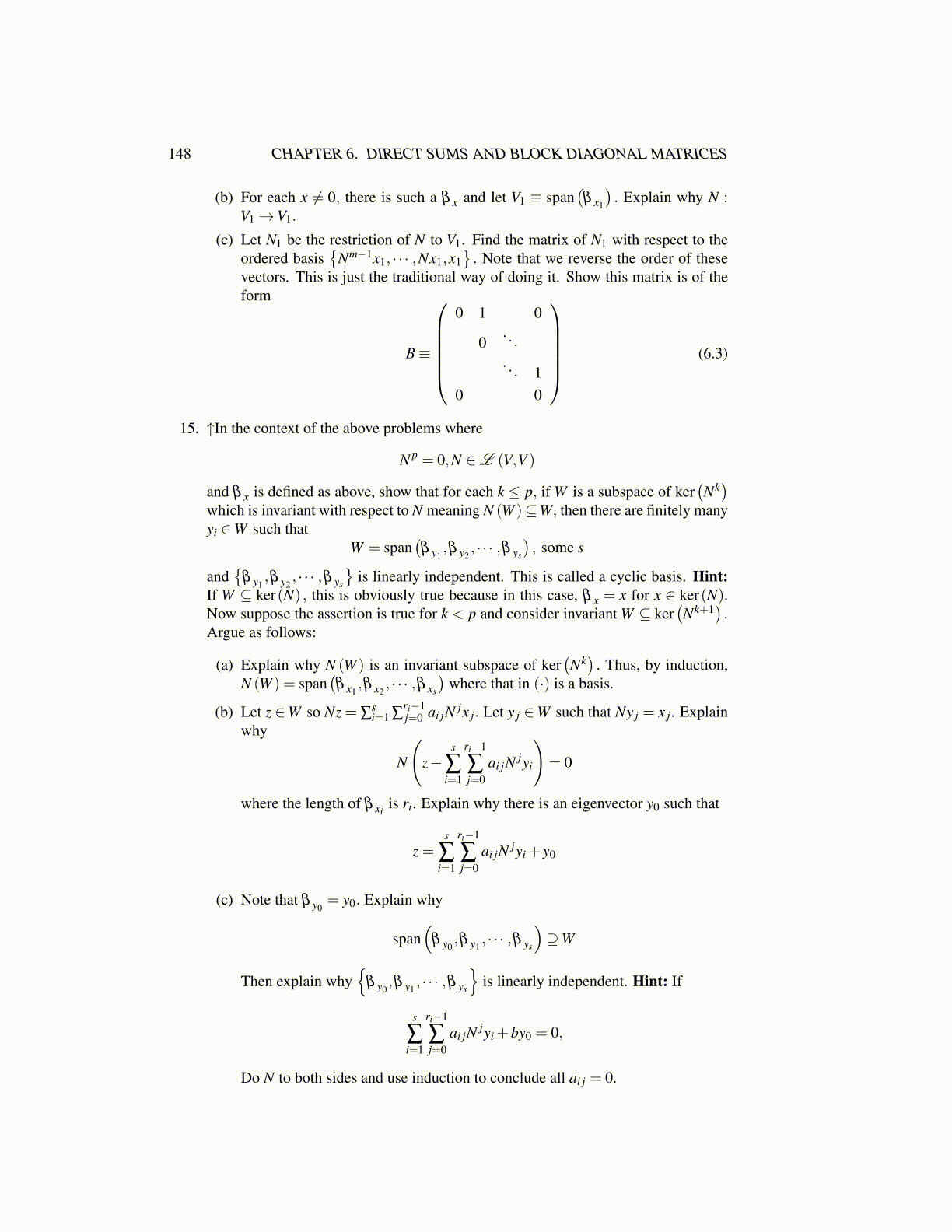
148 CHAPTER 6. DIRECT SUMS AND BLOCK DIAGONAL MATRICES
(b) For each x ̸= 0, there is such a β x and let V1 ≡ span(β x1
). Explain why N :
V1→V1.
(c) Let N1 be the restriction of N to V1. Find the matrix of N1 with respect to theordered basis
{Nm−1x1, · · · ,Nx1,x1
}. Note that we reverse the order of these
vectors. This is just the traditional way of doing it. Show this matrix is of theform
B≡
0 1 0
0. . .. . . 1
0 0
(6.3)
15. ↑In the context of the above problems where
N p = 0,N ∈L (V,V )
and β x is defined as above, show that for each k ≤ p, if W is a subspace of ker(Nk)
which is invariant with respect to N meaning N (W )⊆W, then there are finitely manyyi ∈W such that
W = span(β y1
,β y2, · · · ,β ys
), some s
and{
β y1,β y2
, · · · ,β ys
}is linearly independent. This is called a cyclic basis. Hint:
If W ⊆ ker(N) , this is obviously true because in this case, β x = x for x ∈ ker(N).Now suppose the assertion is true for k < p and consider invariant W ⊆ ker
(Nk+1
).
Argue as follows:
(a) Explain why N (W ) is an invariant subspace of ker(Nk). Thus, by induction,
N (W ) = span(β x1
,β x2, · · · ,β xs
)where that in (·) is a basis.
(b) Let z ∈W so Nz = ∑si=1 ∑
ri−1j=0 ai jN jx j. Let y j ∈W such that Ny j = x j. Explain
why
N
(z−
s
∑i=1
ri−1
∑j=0
ai jN jyi
)= 0
where the length of β xiis ri. Explain why there is an eigenvector y0 such that
z =s
∑i=1
ri−1
∑j=0
ai jN jyi + y0
(c) Note that β y0= y0. Explain why
span(
β y0,β y1
, · · · ,β ys
)⊇W
Then explain why{
β y0,β y1
, · · · ,β ys
}is linearly independent. Hint: If
s
∑i=1
ri−1
∑j=0
ai jN jyi +by0 = 0,
Do N to both sides and use induction to conclude all ai j = 0.